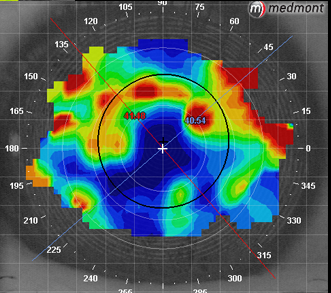Dry Eye occurs when there is inadequate tear film to protect the ocular surface. Symptoms include scratchy, gritty irritated eyes. Life expectancy, longer working careers, increased screen time, low humidity, metropolitan environment and diet are increasing the incidence of dry eye. Diabetes, smoking, contact lenses, eye surgery and medications can exacerbate symptoms. Mild dry eye can be annoyingly uncomfortable, and severe symptoms can limit activities such as work, socialising or travel, significantly reducing quality of life.
Medmont Video Tear Film Analysis
Dry eye science is a growing area. New methods to diagnose the different types of dry eye, (Aqueous Deficient Dry Eye or Evaporative Dry Eye) are being developed, along with new treatments. We now have specialised tests and offer in-practice treatments. If you have dry eye symptoms we may be able to help you.
Here is what a Dry Eye Assessment involves. We start with a questionnaire on your symptoms. This gives insights into your dry eye, and helps us measure improvements. Diagnostic tests include video Tear Film Surface Quality analysis. We use staining techniques for a microscope evaluation which includes assessment of the oil glands and eye lids. Blephasteam Heat goggle treatment is followed by lower lid margin cleaning and oil gland clearing.
At your appointment we will create a treatment plan for ongoing relief. This will often include drops and ointments, Omega-3 supplements and eyelid hygiene treatment.
If you have dry eye, or dry eye symptoms, please book an appointment to see us.


